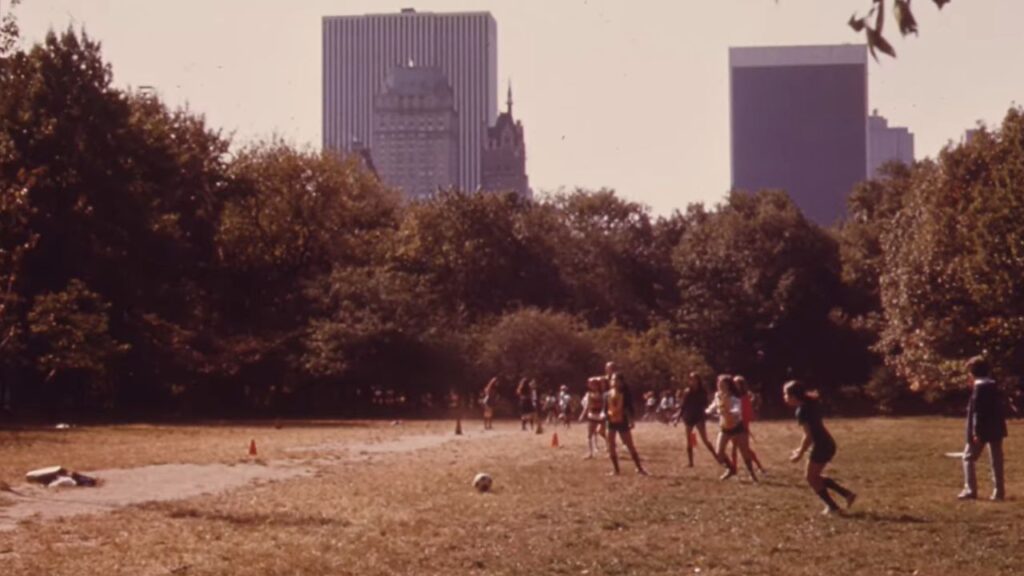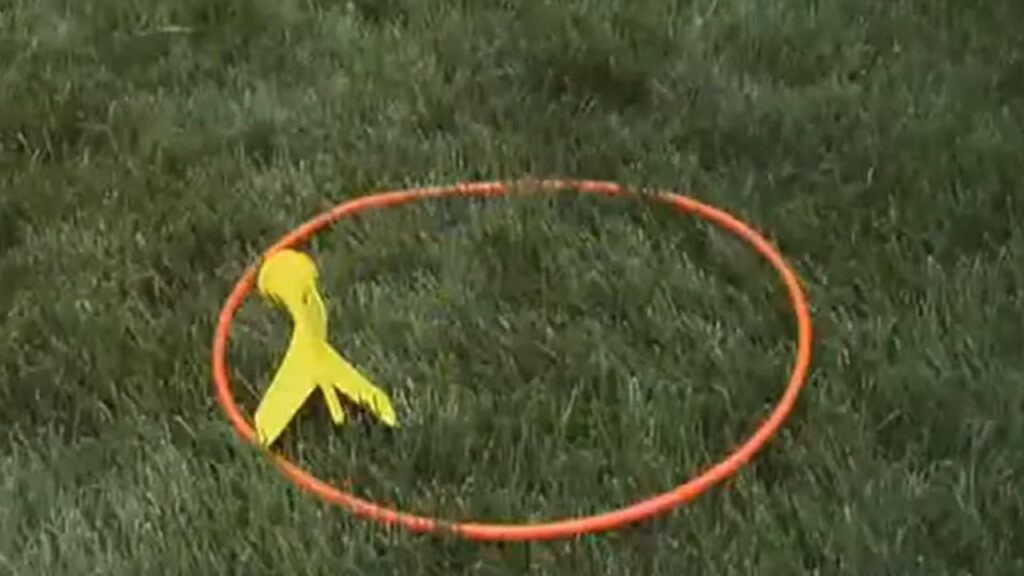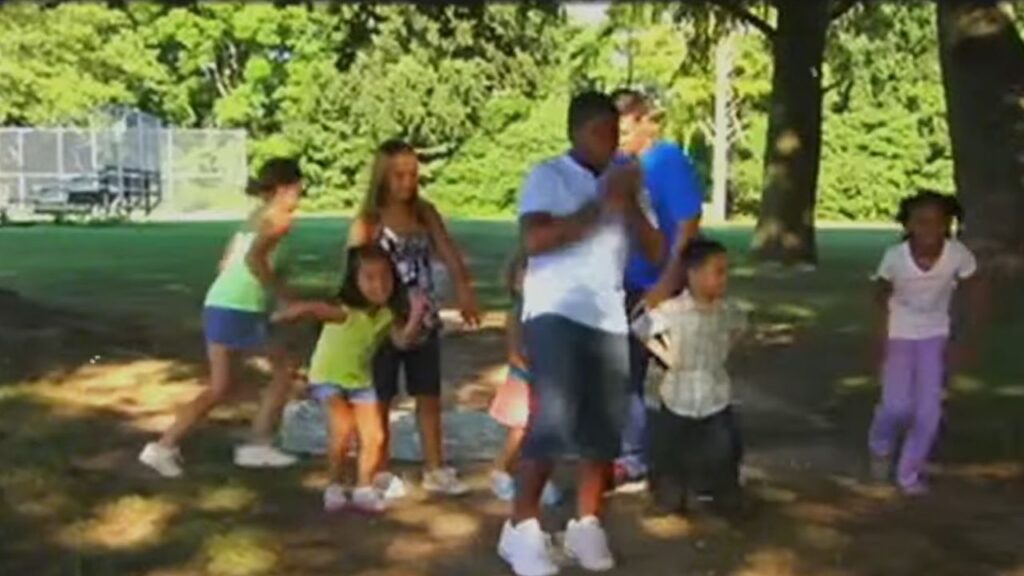Remember “The Outdoor Adventures” that defined our youth? Those endless days spent playing outdoors until the street lights came on seem like a distant memory. Life was simpler then — no phones, no internet, just real connections and pure, unadulterated fun.
Bicycles and Street Games

Let’s explore the 15 outdoor activities today’s kids are missing out on.
Imagine fleets of bicycles, not just for transport, but as chariots of freedom adorned with streamers fluttering like flames in the wind. Playing cards clipped to the spokes added to the thrill.
This was the era from the ’60s to the ’80s, a playground where daring jumps and stunts spoke of untamed imagination and budding bravery. “Did your dad teach you to wear a helmet?” a neighbor once asked. “No,” came the reply, “he taught me not to fall.” We embraced scrapes and bruises as badges of honor and lessons learned.
Hopscotch and Sidewalk Creativity

The quest for real freedom and excitement on bikes starkly contrasts with today’s allure of screens. Can we bring back the magic of tangible experiences, showing today’s kids the ups and downs and the joy of playing cards and spokes?
Hopscotch, seemingly simple, evolved into a ballet of balance and agility. Its squares were stages for countless childhood dramas. It wasn’t just a pastime but an art form perfected on sidewalks and playgrounds.
Flourishing from the bustling ’50s to the vibrant ’80s, as the digital age unfolded, chalk-drawn arenas and the symphony of stones and sneakers faded, obscured by virtual playgrounds. Yet, hopscotch’s blend of physical dexterity and imaginative play calls for a revival. It challenges us to remember and teach the next generation that joy and achievement aren’t just in leaping from one square to another, but in drawing the lines and defining the game itself.
Tree Climbing and Natural Adventures

Climbing trees was the original adventure game — no graphics needed, just rustling leaves and bark under our fingertips. Trees were skyscrapers, fortresses of solitude where the view from the top was worth every scrape earned climbing up.
During the Golden Age of the Great Outdoors from the ’50s to the ’80s, these natural towers tested our mettle, teaching bravery, perseverance, and the sweet taste of victory — apples picked straight from branches. Perhaps it’s time to shake off digital dust and let today’s kids conquer their leafy Everest once more.
Marbles: The Art of Precision

The decline in tree climbing and other physically adventurous play mirrors broader trends where structured activities and screen time have replaced free, unstructured outdoor play. The benefits of tree climbing — physical strength, problem-solving, risk assessment, and a deep connection to nature — are invaluable.
Marbles, those glass orbs that held universes within them, were more than games; they were duels of destiny played in dirt and dust arenas. From the ’50s to the ’80s, we were marble gladiators, where every thumb flick was a battle for glory, and the spoils as colorful as victor’s dreams.
But as the world turned digital, these small spheres of joy were tucked away in forgotten playtime drawers. Yet, within marbles lies a galaxy of skills, strategy, finesse, and the simple beauty of play waiting to be rediscovered.
Their disappearance from playgrounds mirrors the shift towards more structured, often indoor activities, leaving behind tactile, imaginative play marbles provided. A marble renaissance potential exists as parents and educators seek alternatives to screen time, offering a blend of physical skill, strategic thinking, and social interaction.
Roller Skating: Gliding through Generations

Roller skating was our disco on wheels, the heartbeat of the ’70s and ’80s, where every roll was a note in the soundtrack of our youth. It wasn’t just about moving; it was about grooving with friends, the wind in our hair, and freedom strapped to our feet. Rinks were temples where we worshipped the gods of speed and grace.
But as years rolled by, these sacred halls saw fewer pilgrims. Now, as whispers of a roller revival breeze through, we’re reminded of lessons learned in balance, euphoria of gliding across the floor, and community that thrummed to beat of rolling wheels.
The rink beckons not just to remember joy of skating but to pass on torch of freedom on four wheels to those who’ve never known thrill of skate. Resurgence speaks to deeper yearning for connection, physical activity, nostalgia for simpler time.
Kickball: Where Fun Kicked Off

Kickball was melting pot of sports where every kick sent rubber ball soaring and every base run mini-epic. This game, democracy in action on field from ’60s to ’80s, was time when rules were simple, and joy of play was only trophy sought.
It was where underdog could become hero with single powerful kick, testament to power of play and community. Yet, as structured leagues and digital entertainment took center stage, communal rhapsody of kickball quieted.
But imagine resurgence, renaissance of rubber balls and heart-pounding home runs, reminder that joy can be found in simplest of activities. This potential comeback could serve as crucial reminder of importance of unstructured play, fostering creativity, teamwork, physical fitness among today’s youth.
Four Square: The Geometric Playground

Four Square once reigned as monarch of playgrounds, testament to democracy of play where anyone could ascend to royalty with well-placed bounce. This square court drawn with nothing more than chalk and occupied by children armed only with bouncing ball was arena for countless duels of wit, agility, sheer will.
From bustling schoolyards of ’60s through ’80s, Four Square was crucible where friendships were forged, rivalries settled, all within boundaries of simple geometric challenge.
Yet, potential for revival shines brightly as beacon for new generation seeking escape from sedentary shackles of screen time. Could resurgence of Four Square rekindle flames of interactive, inclusive play, offering counterpoint to solitary digital worlds dominating today’s childhood?
Splashing in Sprinklers: Refreshing Delight

Dashing through sprinklers was just one chapter of endless summer saga where each day was new page in quest to live like Evel Knievel. The ’60s to ’80s were canvas for adventures — running through woods, splashing in creeks, exploring every nook of neighborhoods until stars said time to head home.
Simple act of playing in sprinkler, transforming every backyard into makeshift water park, was refuge from heat, source of boundless exhilaration. It was time when all needed for happiness was water, patch of grass, freedom to get soaked.
Today, as structured schedules, screens vie for children’s attention, joy of carefree, water-soaked afternoons serves as reminder of what we’ve lost. Reviving outdoor play can show today’s kids freedom our childhoods enjoyed, merging digital habits with joys of natural world.
Dodgeball: The Fast-Paced Challenge

Dodgeball, whirlwind of motion and emotion, epitome of playground democracy where agility, strategy, teamwork converged in symphony of rubber balls. This game, staple of physical education classes from ’60s to ’80s, transcended mere act of throwing, dodging, became canvas on which dramas of childhood were painted stark relief.
Dodgeball’s decline in popularity, prompted by concerns over safety, inclusivity, mirrors broader shifts in societal attitudes towards childhood play, emphasizing structured activities over unbridled, sometimes chaotic free play. Could modern reinterpretation of dodgeball, one that balances thrill of game with needs for safety, fairness, reignite interest in this classic form of play?
Building Forts and Treehouses: Imaginative Constructs

Building treehouses and forts was ultimate expression of childhood ingenuity, independence — castles, fortresses, secret bases crafted from raw materials of imaginations. In ’60s to ’80s, wielding hammers, nails, dreams, constructed private realms, learning physics, teamwork, satisfaction of creating something from nothing.
As digital age lured children indoors, bastions of creativity became endangered species. Yet, call to build, create, imagine physical spaces remains fundamental impulse. Reigniting this passion could reconnect today’s youth with tangible joys of construction, creativity — building not just forts but resilience, camaraderie.
Lawn Darts: Precision and Play

Lawn darts, jarts affectionately known, epitome of backyard adventure. ’60s to ’80s saw us masters of aerodynamics, precision, laughter as we aimed darts at stars.
Competition was fierce, stakes high, lessons in trajectory, teamwork invaluable. But as safety concerns, shifting tastes pushed these weighted missiles from lawns, void opened in realm of outdoor play.
Could resurgence of lawn darts, redesigned with safety in mind, offer today’s children thrill of competition, joy of mastering skill, camaraderie through shared play?
Tag: Chasing Childhood

Tag was heartbeat, pulse, laughter set free in ’60s to ’80s, every chase sprint towards joy. Game of endurance, strategy, pure exhilaration where simple act of touching meant everything.
Tag bridged divides of age, gender, background, uniting us in pursuit of fun, thrill of chase. But as digital age encroached, sound of pounding feet, laughter faded from streets. Could revival of tag, blend of physical activity, social interaction, simple rules, reignite spirit of outdoor play for today’s children?
Tractor Pulling: Power and Precision
Tractor pulling was our expression of strength and showmanship, where every revving engine was a symphony of speed and precision. The ’60s to the ’80s saw us grappling with gravity and momentum, turning dirt tracks into theaters of daring maneuvers.
The whoops and hollers from the crowd as we pushed our machines to the limit underlined the shared joy of thrill and technique. Yet, as screens captured our attention and urban sprawl engulfed our tracks, this thunder quieted. Could a modern resurgence reignite the thrill of tractor pulling, introducing a new generation to the art of automotive dominance, the pageant of power, and the community that thrived behind the wheel?
Splashing in Puddles: Joy in Simplicity
Splashing in puddles was more than a respite from rain; it was a celebration of spontaneity and a symphony of squishy boots. The ’60s to the ’80s, where every puddle became a canvas for our imagination and the source of gleeful mischief.
We didn’t just jump; we splashed and danced, leaving the world a little muddier and our hearts a little lighter. Yet, as our focus shifted to digital pursuits, these simple puddles faded from the forefront of childhood play.
The resurgence of puddle jumping not only celebrates the joy of spontaneous play but also reconnects children with the elemental pleasures of the natural world. This revival invites us all to remember the happiness found in the simplest of activities.
Backyard Creativity: Unstructured Wonder
Backyards were our blank canvas of creativity, where every blade of grass was a potential masterpiece. The ’60s to the ’80s saw us transformed into Picassos of play, creating hopscotch squares, tracing treasure maps, and constructing elaborate obstacle courses from the raw materials of our imaginations.
But as screens beckoned and supervised activities on their way, a spark of spontaneous play flickered out. Could a revival of backyard creativity rekindle the joy of unstructured play, offering a counterbalance to today’s highly scheduled childhoods? The simple act of providing space and time for children to explore, create, and imagine could yield profound benefits for their development and happiness.

